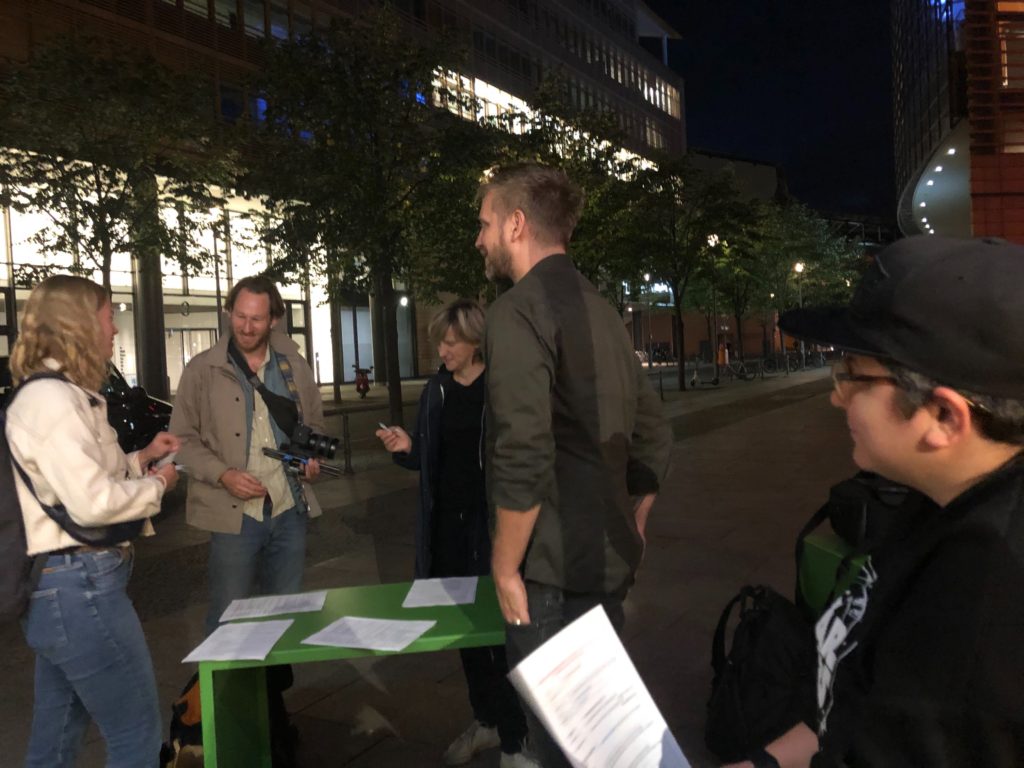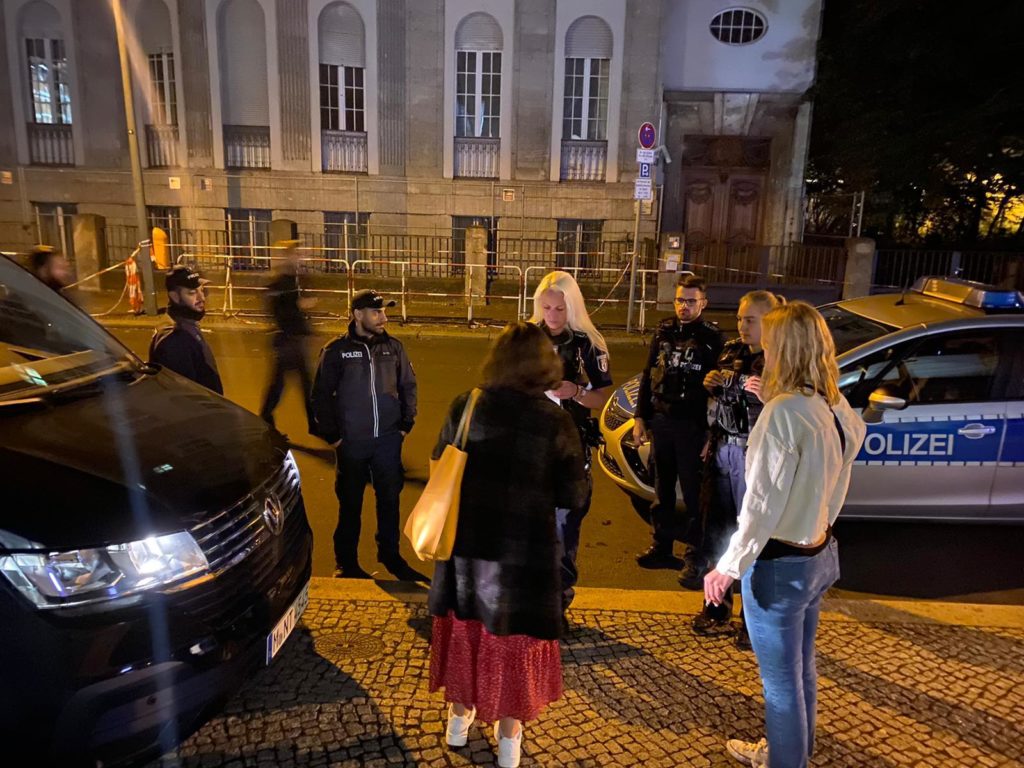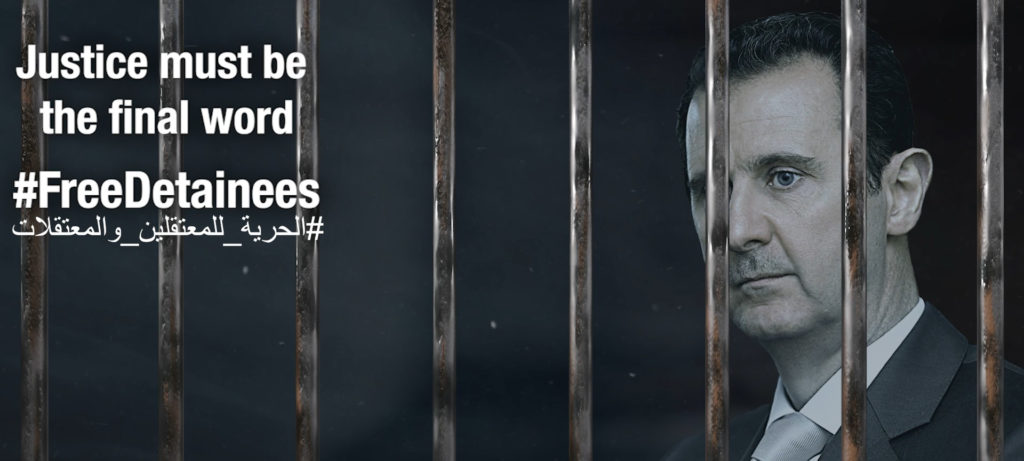Syrian embassy projections
In August 2020, to mark International Day of the Disappeared, we were determined to draw attention to the thousands of people still disappeared and missing in Syria. We wanted to bring the voices of their families, and their demands for freedom and information, into the spotlight.
Inspired by the activists at Led By Donkeys, who had recently projected their campaign message onto the UK’s White Cliffs of Dover, we hit on the idea to do a projection directly onto the Syrian Embassy in Berlin. Many families of people held in detention in Syria live in Berlin, and Germany is unusual amongst some European countries in still having a Syrian embassy. It was a high profile location to deliver our message in a punchy way.
From the beginning, this had to be about the voices of families themselves, so we quickly worked to get video messages from women in the Families for Freedom movement to include in the projection. We received videos from inside Syria, Turkey, Lebanon and Germany – speaking directly to camera about the last thing their loved ones said to them before they were detained. These videos were incredibly moving, and made the team even more determined to make the projection a success.
We wanted to show we could still campaign during COVID times – even if it didn’t involve lots of people.
Next came the actual logistics of producing the projection and finding a team to run the stunt. Many lighting companies were reluctant to take part as the legal situation is unclear when it comes to projecting onto an embassy in Germany. We managed to find a creative events lighting company in Berlin who both designed the projection video – including mapping the light projection to the specific architecture of the building – and hired the equipment for the night.
We sought advice from our lawyer, who said the projection would probably be ok under Germany’s freedom of art and expression laws, although there was little precedent for us to go off. That meant we had to brief everyone taking part; the projectionist, the driver, videomakers and campaigners, that there was a legal risk involved.

On the night we met early to rehearse the stunt, driving to a nearby university to do a practice run on their faculty building walls. A huge projector was strapped into the back of a minivan, it’s beamer ready to shine out of the passenger window. It was dark already so we had time to get the video in focus and take some backup footage in case we were chased away before we had time to shoot a full take at the embassy.
Then it was time to do the proper take. We approached the embassy slowly, having already started the generator for the projector around the corner. We positioned the car in front of the embassy and our videographers jumped out of the car to get the shot. Our videomakers got two full takes of the video, and the team breathed a sigh of relief.
Pretty quickly the police came and told us to turn off the video, but they were unclear of the legality of the action, so called in a senior officer. After some deliberation and a phone call, the police decided to let us off the hook.

The next day we quickly turned our footage into a Twitter video. We couldn’t include all the heartfelt messages we received from families in the final video as we needed to stick to Twitter’s 2.20 minute time limit. Although the media didn’t cover our action, we hit that rare thing: online virality. Over 300,000 people have watched the video online, and we were retweeted by Anonymous helping us reach an even wider audience.
When we started out, we had wanted to raise the issue of Syria’s detainees by producing something that would go viral to get our message out. We wanted it to be a big disruptive moment that targeted the regime. And we wanted to show we could still campaign during COVID times – even if it didn’t involve lots of people.

We hit our goals by having a tight concept that was well prepared. It was immediately clear to the audience, no matter their level of knowledge, that this was a risky direct action and protest, centering the stories of women, with a clear and uncompromising demand.

What we learnt
The video footage could have been clearer, and the rush of police to shut us down meant we didn’t get some of the angles we wanted. The whole project also took longer than expected to organise, as many companies were put off by the legal risks involved. These are all lessons for next time and for you if you also want to do a projection for your campaign.
Key to the success of the project was choosing the right building for the stunt. We spent a lot of time thinking of locations in Berlin. Doing the projection at the embassy of the very regime that is responsible for detaining and killing so many people was symbolically very important for everyone involved.